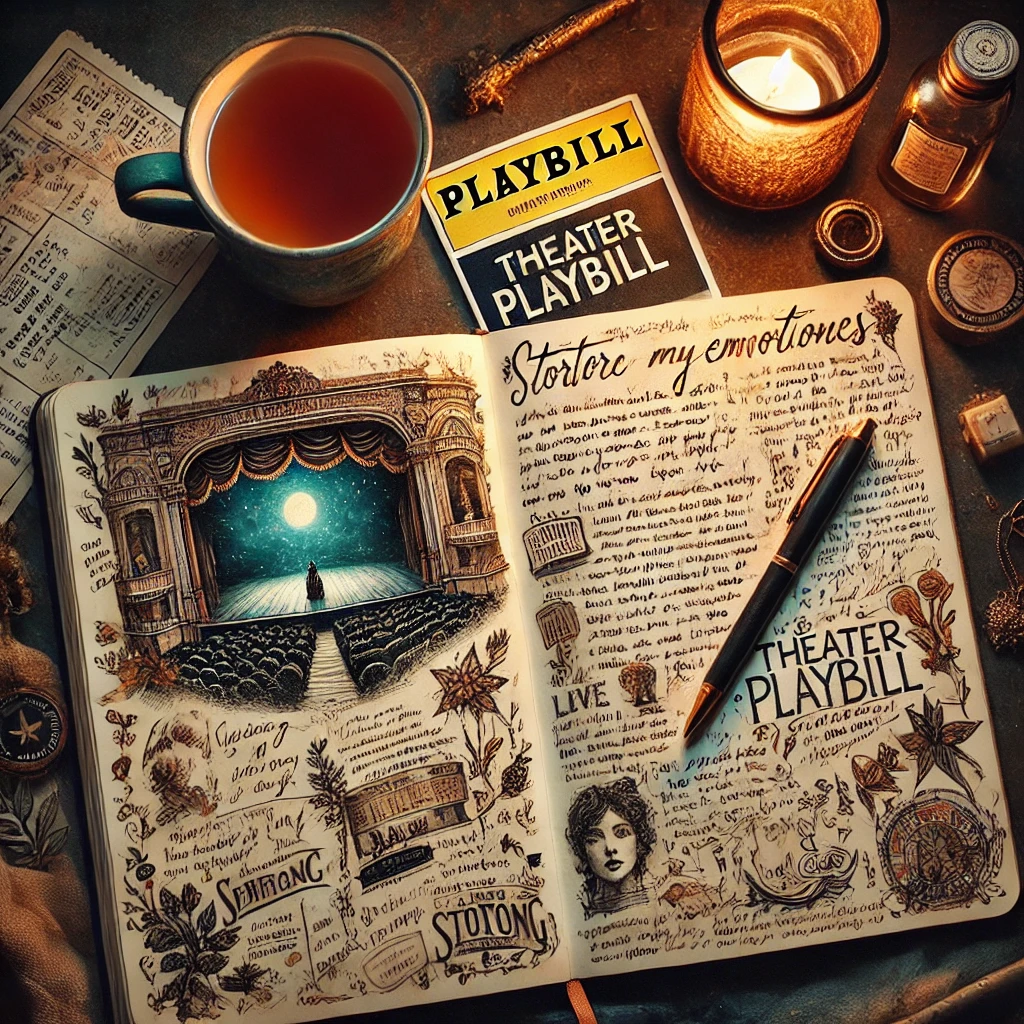Some performances linger long after the final curtain call—the music, the movement, the emotions. But how do you preserve that feeling? Journaling about performances allows you to relive the experience, deepen your appreciation, and document your evolving relationship with the arts. Here’s how to translate the magic of a live performance into words.
1. Set the Scene Before You Write
Before diving into the details, take a moment to reconnect with the experience.
- Close your eyes & recall the atmosphere: The sounds, the lighting, the anticipation in the air.
- Flip through your ticket stub, playbill, or notes: Physical elements bring memories to the surface.
- Listen to the soundtrack or revisit clips if available.
- Find a quiet space to write where you can immerse yourself fully.
2. Begin with the Emotional Impact
Start by describing how the performance made you feel.
- What emotions surfaced while watching?
- Did a particular moment move you unexpectedly?
- Was there a lingering mood you carried home with you?
Example: “The final pas de deux left me breathless. It wasn’t just the technique—it was the unspoken emotion between the dancers, the quiet intensity in their expressions.”
3. Describe the Performance Through Your Senses
Go beyond what you saw—engage all five senses.
- Sight: Colors, costumes, lighting effects, facial expressions.
- Sound: The orchestra tuning, the rise and fall of voices, the way silence held weight.
- Touch: The chill of the theater air, the texture of the seats, the press of hands during applause.
- Smell: The mix of stage fog, perfume, old theater wood.
- Taste: The intermission drink, the lingering mint from your purse.
Sensory details bring the experience to life in your writing.
4. Capture the Movement & Energy
For dance, theater, or music performances, movement plays a vital role.
- Was the choreography fluid, sharp, weightless?
- Did the actors use stillness or grand gestures to convey emotion?
- How did the musicians shape the energy of the performance?
Example: “The lead actor’s movements felt electric—every step deliberate, every pause heavy with meaning.”
5. Reflect on the Story & Themes
Every performance tells a story, whether abstract or narrative-driven.
- What themes stood out to you?
- Did the story unfold in a way you expected?
- Were there symbolic elements in the set, lighting, or costumes?
Example: “The costuming told its own story—muted tones for the past, vivid jewel colors for the present. It was a visual timeline of the character’s journey.”
6. Compare Your Expectations vs. Reality
- Did the performance surprise you?
- Were there standout moments that defied your assumptions?
- Did it remind you of past experiences or performances?
Example: “I expected the score to be dramatic, but the subtle shifts in volume were what really drew me in—soft, barely-there notes that made the loud moments even more powerful.”
7. Give Yourself a Creative Prompt
To deepen your reflection, try a writing exercise:
- Write a letter to the performers expressing what the show meant to you.
- Describe a single moment in detail as if you were painting a picture with words.
- Rewrite a scene or movement from your perspective.
These prompts push your writing beyond description into personal interpretation.
8. Make It a Habit
Your journal entries can become a personal archive of artistic experiences.
- Keep a dedicated performance journal to track your reflections.
- Include sketches, playbill snippets, or ticket stubs.
- Note how each performance changes the way you see art and storytelling over time.
By capturing performances in a journal, you transform fleeting moments into lasting memories. What’s the next show you can’t wait to write about?




Leave a Reply